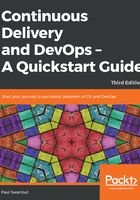
Identifying key people
While compiling the list of engaged contributors, you should also identify the key people within the overall process. These key people may not be obvious at first; however, asking the same simple questions of a number of different people from different parts of the business during your network building will give you some strong indications as to how key the individuals are. Examples of these simple questions would be as follows:
- Who do you feel should I ensure I invite to this?
- Who do you normally talk to if there's a problem?
- Who knows how this all works?
- Who normally makes changes to the process?
There is also a very strong possibility that many of this key people will be the ones who say they are too busy. The fact that they are too busy may be directly attributed to the fact that the process they are working in is broken, but they don't have time to stop and realize this. I would highly recommend that you take a little more time to ensure that those key people who fit into this category are encouraged, cajoled, and convinced to take part. For example, you'll need be very flexible in terms of aligning to their availability—this may mean changing your plans at short notice just to get 15 minutes with them; however, I would encourage you to do this as disengaged contributors can easily become active detractors later down the line.
You will no doubt also come across individuals who are very (sometimes overly) eager to be involved simply because they have an axe to grind or need a soapbox to proclaim their personal opinion. These individuals aren't that obvious to spot, however with a few well-placed questions their intentions become more obvious—especially when their responses seem biased and include words and/or phrases such as blame, fault, them, or not my problem. If these individuals want to be involved then that's fine, but you need to be mindful of the fact that such people can potentially derail the process—which again may be why they want to be involved. One word of warning; do not simply dismiss these individuals out of hand as they may have valuable observations to bring forward and dismissing them may foster further negativity and make them very vocal active detractors. You should however ensure these individuals agree to be engaged contributors and understand the ground rules you have set. During the next stage, you will no doubt need to keep an eye on them—much like the naughty children of the class—so that disruption and negativity are kept in check. That said, you may be surprised at how much value they bring to the process.